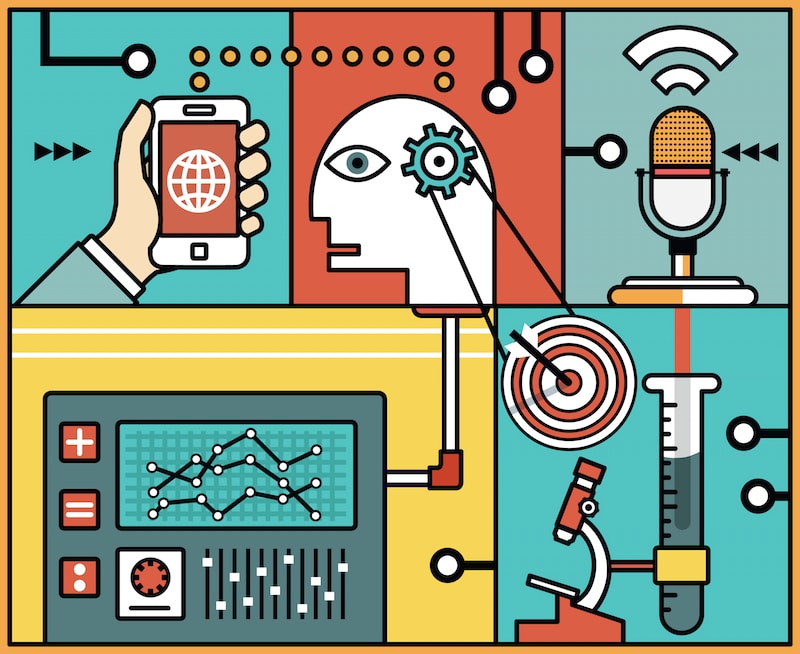The key drivers causing Building Automation (BAS) to morph into the Building Internet of Things (BIoT) fall into 3 main categories - business drivers, technology drivers and energy efficiency drivers.
In the first category the driver that will have the most impact in the long term is data integration into business systems. Organizations are increasingly looking to leverage the benefits of the Internet of Things by integrating data from connected devices from their building systems and employees and integrating them into already well established corporate business systems such as ERP, CRM, BPM etc.

Combining and analyzing this data in new and innovative ways can help reduce costs, improve visibility of market opportunities and assist with supply chain optimization. Device manufacturer engagement in IoT is increasing the numbers of device manufacturers in vertical markets including retail, healthcare and manufacturing that are partnering with semiconductor, sensor and network providers to provide connectivity and interoperability in their products.
Bluetooth or Wi-Fi functionality has become expected in smartphones and tablets, but increasingly products such as fridges, air conditioning units, lighting systems and cars are being connected to the Internet of Things as a means of market differentiation by manufacturers. Falling implementation costs have seen substantial cost reductions in all of the core components of the Internet of Things. The price of microchips, sensors, network infrastructure and bandwidth have all fallen due to technology innovations and increasing market competition and are now within reach for most organizations.
New technical innovations are helping to drive the deployment of the BIoT. The market is far outpacing the rate of innovation seen in other sectors. For example, between 2011 and 2012 worldwide patenting across all areas of technology increased by 12.7% and this can be compared to an 82.0% increase in IoT patenting over the same time period.
Demand for smartphones & other connected devices show that over half a billion (526 million) mobile devices and connections were added in 2013. Global mobile devices and connections in 2013 grew to 7 billion, with smartphones accounted for 77% of that growth.
Statistics aside, the potential for these devices to act as nodes on the IoT network is huge. Data gathered from sensors embedded in mobile devices can provide a wealth of useful information from location data, to temperature, to traffic flows, to capturing customer preferences to social media integration. The explosion of connected devices in buildings is estimated to grow from 1.7Bn in 2014 to approaching 5.5Bn by 2020, which represents a staggering CAGR of nearly 27%.
Cloud computing services are becoming increasingly affordable, vastly expanding the capability of organizations to crunch very large data sets. Combined with Big Data applied to data sets whose size is beyond the ability of commonly used software tools to capture, manage, and process the data within a tolerable elapsed time.
[contact-form-7 id="3204" title="memoori-newsletter"]
IPv6 is the latest revision of the Internet Protocol (IP), the communications protocol that provides an identification and location system for computers on networks and routes traffic across the Internet. It was launched in June 2012, increasing the number of global IP addresses from 4.3Bn to 340 trillion, trillion, trillion… yes that’s a lot of zeros.
The legacy IP version 4 (IPv4) simply does not provide the quantity of addresses required to connect the massive number of devices required to achieve the vision of the IoT. New features like the extensive auto-configuration functionality, quality of service mechanisms and enhanced security promise a better integration of building automation technology in the IoT.
Energy efficiency / environmental drivers are well established in the building control industry because they account for some 49% of overall energy consumption as well as 42% of global greenhouse gas emission. Building energy consumption grew at an average annual rate of 3.4% from 1973 to 2010, and is projected to grow 70% from 2010 to 2035. Increased demand is most dramatic in Asia, projected to average 4.7% growth per year to 2035.
Furthermore some two billion people currently have no access to electricity, in developing countries demand is projected to grow at an average annual rate of 3 percent from 2013 to 2020. These trends listed above mean that reducing environmental burden associated with buildings is becoming an increasing priority of the green policy agenda; pressure is growing on building owners, occupiers and national governments to improve the energy performance of buildings.



